Music on Playing Cards
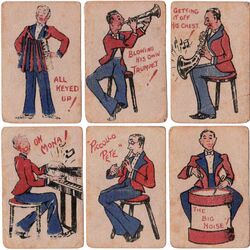
Music has played an important cultural and social function since prehistoric times. It helps form tribal bonds and enhances religious and spiritual practices. All kinds of music are depicted on playing cards and card games, from opera to popular music, ancient and contemporary.
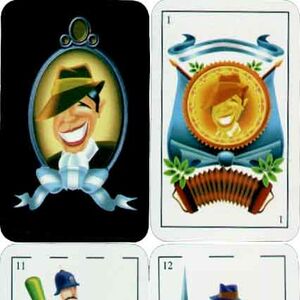
Argentinean Tango playing cards
The Tango - sultry and seductive - is Argentina's form of popular music and dance, invented in Buenos Aires in the 19th century.
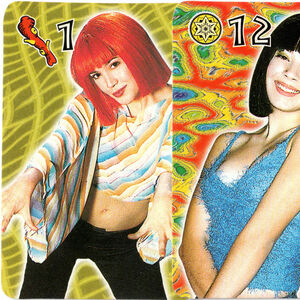
Bandana
Bandana Argentine pop girl group playing cards 2002.
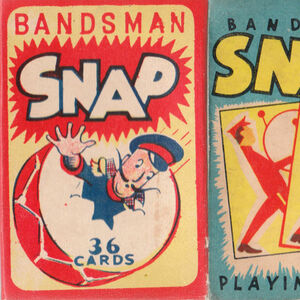
Bandsman Snap
Bandsman Snap by Chiefton Products Ltd of Bristol, c.1950s.
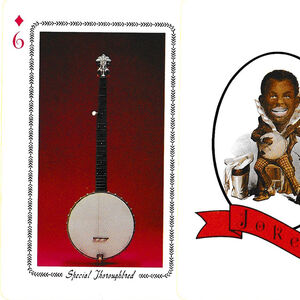
Banjo playing cards
Banjo playing cards featuring the collection of Akira Tsumura, Japan, c. 1978.
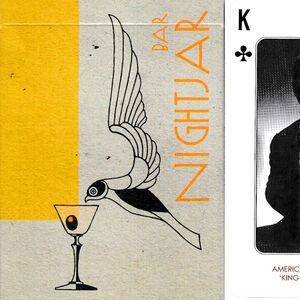
Bar Nightjar
Nightjar, a destination for discerning drinkers to meet, linger and relax.
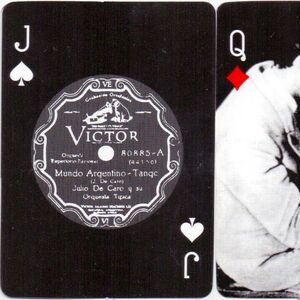
Black Tango
‘Black Tango’ playing cards with photographs of dancing couples published by Gardés Editorial, 2003.
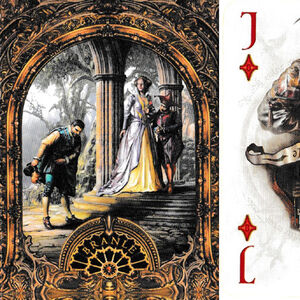
Branle playing cards
‘Branle’ playing cards inspired by a 12th-century dance, produced by Noir Arts, USA, 2015.
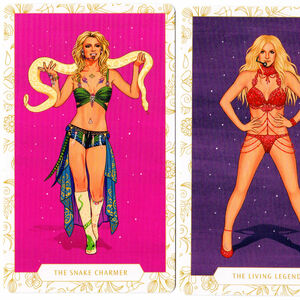
Britney Spears Oracle
Britney Spears Oracle: A Deck and Guidebook to Be Stronger Than Yesterday — a card set for Britney fans and collectors.

Calliope: a Renaissance band
Facsimile of cards attributed to Hans Schäufelein (c. 1480-1540) produced by ‘Calliope’, a New York City-based band.
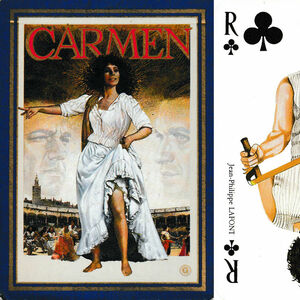
Carmen playing cards
Characters and scenes from the 1984 film of Bizet’s most famous opera, Carmen.
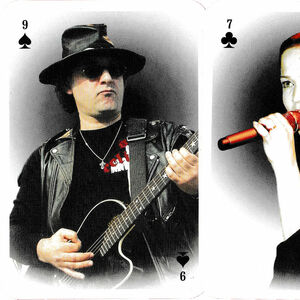
Castle Rock Club
Castle Rock Club playing cards featuring Russian rock stars and musicians, c. 2000.
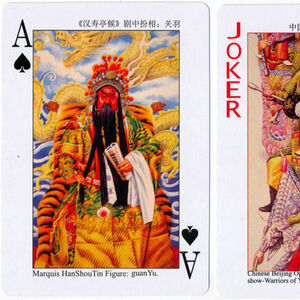
Chinese Roles of Beijing Opera
A very impressive deck of cards featuring 54 different images from “Chinese Roles of Beijing Opera” published by HCG Poker Productions, 2005

Cosi Fan Tutte
Cosi Fan Tutte was published in 1994 and is based on Mozart's opera. The pips (heart-shaped locket, magnet, marriage contract and poison bottle) are key objects in the development of the operatic plot.

Crazyrider playing cards
Stylised portrayal of rock musicians from the 1980s.
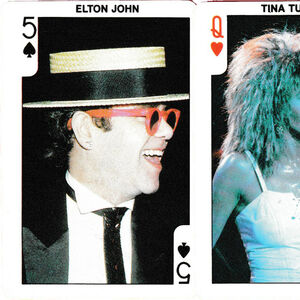
Dandy Rock’n Bubble
56 rock and pop stars of the 1980s, issued in Denmark with bubble gum.
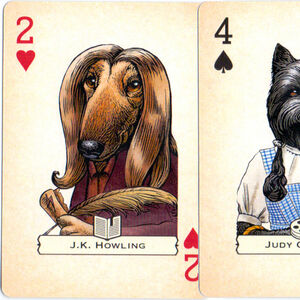
Dogs
‘Dogs’ playing cards showcases 52 canine portraits in four suits as authors, artists, musicians and film stars, illustrated by Chet Phillips, 2016
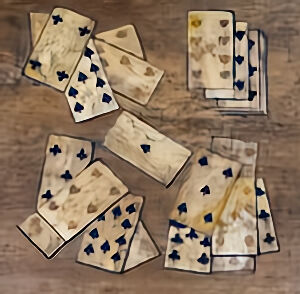
Eglantine Table
The Eglantine Table, Hardwick Hall, Derbyshire, elaborately inlaid with marquetry depicting musical instruments, playing-cards, games and heraldic references.
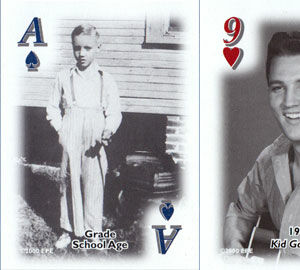
Elvis Presley
Elvis Presley playing cards published by The United States Playing Card Company, c.2002.
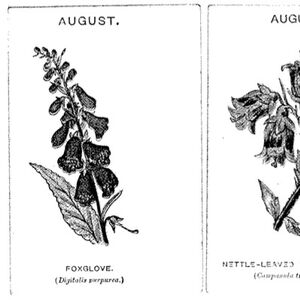
EPCS August 1995 Newsletter Members Only
Peace and Liberation VJ DAY 1945-1995 • John Jaques & Son 1795-1995 Bicentenary • WWII • Royals • Guinness • Bank of England • Snap • W.H. Willis • Battleships • Musical • Battle of Waterloo • R.J. Mitchell • Hignett Bros Cigarettes • John Dewar • Shakespearean
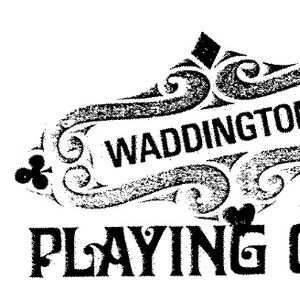
EPCS February 2003 Newsletter Members Only
Waddington Catalogue • Poets at the Card Table • Hindooy • White Witchcraft • New Transformation Cards • Cavalier Cards • See-through Pack • James Bond 007 • West Piggy Bank • Millennium Dome Souvenir • Fassett No-Revoke Pack • Zodiac Pack • Romany Fortune Telling Book • Decorative Items • Plastic Cards DLR • Picasso & Waddington • Cards, Words & Music • Rhyme Without Reason • Patience Books • PAK & Sovereign Guardsman • Imitation Goodall • William Mitchell (Brewer)

